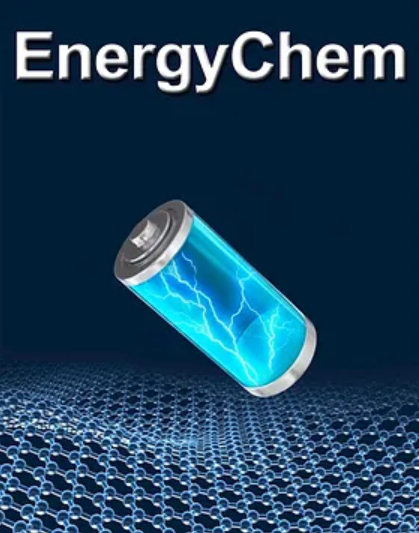Recent progress in oxygen electrocatalysts for aprotic lithium-oxygen batteries
IF 22.2
Q1 CHEMISTRY, MULTIDISCIPLINARY
引用次数: 0
Abstract
Lithium-oxygen (Li-O2) battery has gained wide interests as one potential energy storage solution for renewable energy due to its ultrahigh specific energy (∼3500 Wh kg-1). Currently, its development has suffered from technical issues including poor rate capability, low round-trip efficiency and inferior cycling stability, which stem from the sluggish kinetics of oxygen reduction reaction and oxygen evolution reaction, irreversible formation/decomposition behavior of Li2O2 and parasitic reaction during discharge and charge processes. Thus, developing highly efficient electrocatalysts towards oxygen electrode reactions is urgently needed. In this review, we firstly discuss the basic structure and fundamental chemistry of Li-O2 batteries. Key performance indexes of electrocatalyst are then highlighted and the effects of these key performance indexes of electrocatalysts on the surface and interface chemistry of oxygen electrode reactions in Li-O2 battery are extensively clarified. Accordingly, the structure-performance relationships of different kinds of electrocatalysts are comprehensively discussed for non-aqueous Li-O2 battery. Finally, we conclude with a summary on the challenges for achieving high-efficiency electrocatalysts and an outlook on pointing out the promising approaches for developing advanced oxygen electrocatalyst for Li-O2 battery.
求助全文
约1分钟内获得全文
求助全文
来源期刊

EnergyChem
Multiple-
CiteScore
40.80
自引率
2.80%
发文量
23
审稿时长
40 days
期刊介绍:
EnergyChem, a reputable journal, focuses on publishing high-quality research and review articles within the realm of chemistry, chemical engineering, and materials science with a specific emphasis on energy applications. The priority areas covered by the journal include:Solar energy,Energy harvesting devices,Fuel cells,Hydrogen energy,Bioenergy and biofuels,Batteries,Supercapacitors,Electrocatalysis and photocatalysis,Energy storage and energy conversion,Carbon capture and storage
 求助内容:
求助内容: 应助结果提醒方式:
应助结果提醒方式:


